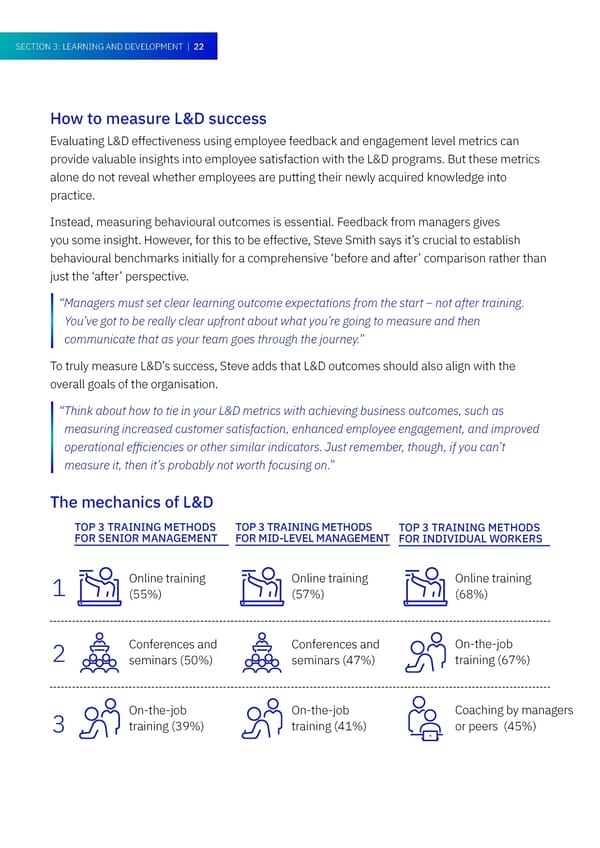Ch3
SECSECTTION 1: LEADERSHIP | ION 3: LEARNING AND DE22 VELOPMENT | 22 How to measure L&D success Evaluating L&D effectiveness using employee feedback and engagement level metrics can provide valuable insights into employee satisfaction with the L&D programs. But these metrics alone do not reveal whether employees are putting their newly acquired knowledge into practice. Instead, measuring behavioural outcomes is essential. Feedback from managers gives you some insight. However, for this to be effective, Steve Smith says it’s crucial to establish behavioural benchmarks initially for a comprehensive ‘before and after’ comparison rather than just the ‘after’ perspective. “Managers must set clear learning outcome expectations from the start – not after training. You’ve got to be really clear upfront about what you’re going to measure and then communicate that as your team goes through the journey.” To truly measure L&D’s success, Steve adds that L&D outcomes should also align with the overall goals of the organisation. “Think about how to tie in your L&D metrics with achieving business outcomes, such as measuring increased customer satisfaction, enhanced employee engagement, and improved operational ef昀椀ciencies or other similar indicators. Just remember, though, if you can’t measure it, then it’s probably not worth focusing on.” The mechanics of L&D TOP 3 TRAINING METHODS TOP 3 TRAINING METHODS TOP 3 TRAINING METHODS FOR SENIOR MANAGEMENT FOR MID-LEVEL MANAGEMENT FOR INDIVIDUAL WORKERS 1 Online training Online training Online training (55%) (57%) (68%) 2 Conferences and Conferences and On-the-job seminars (50%) seminars (47%) training (67%) On-the-job On-the-job Coaching by managers 3 training (39%) training (41%) or peers (45%)
 Whitepaper - Leadership Reimagined Page 21 Page 23
Whitepaper - Leadership Reimagined Page 21 Page 23